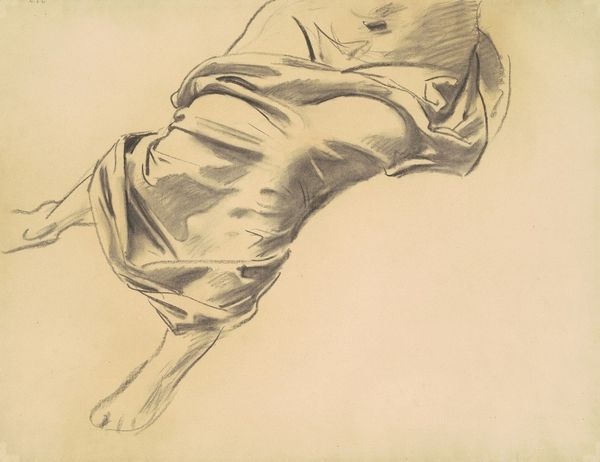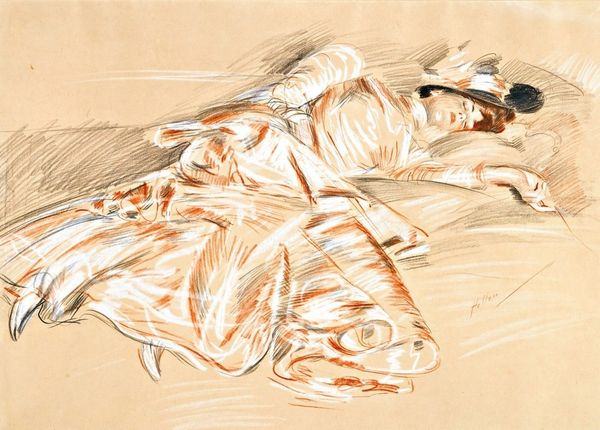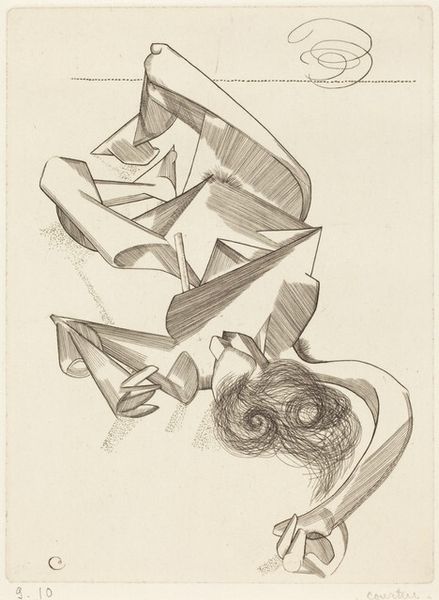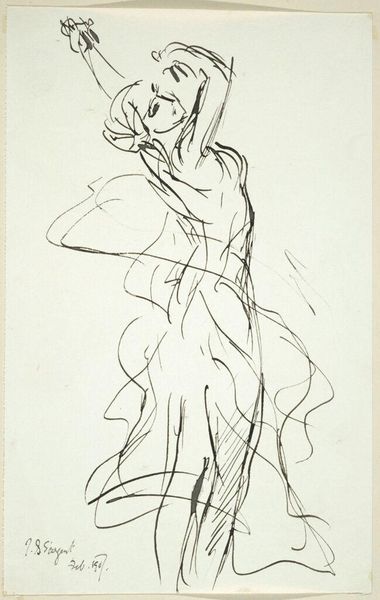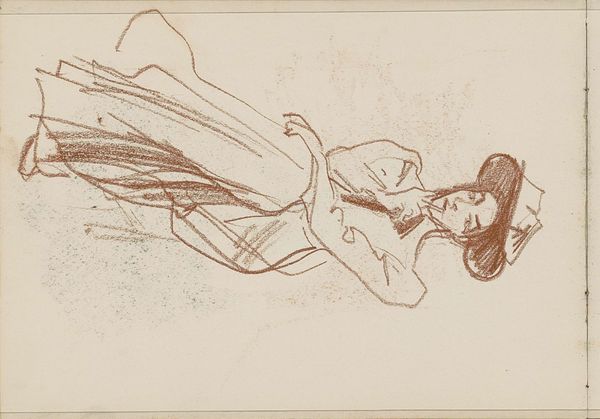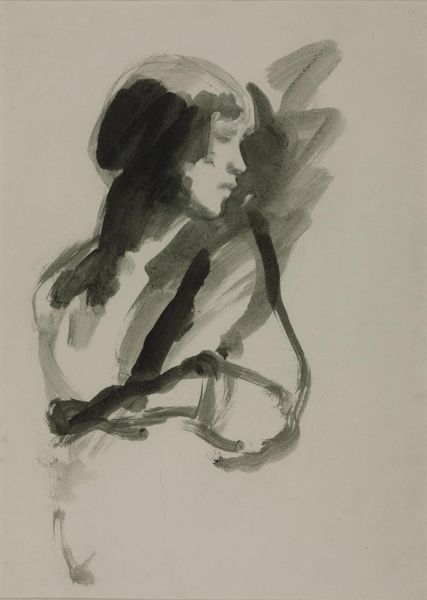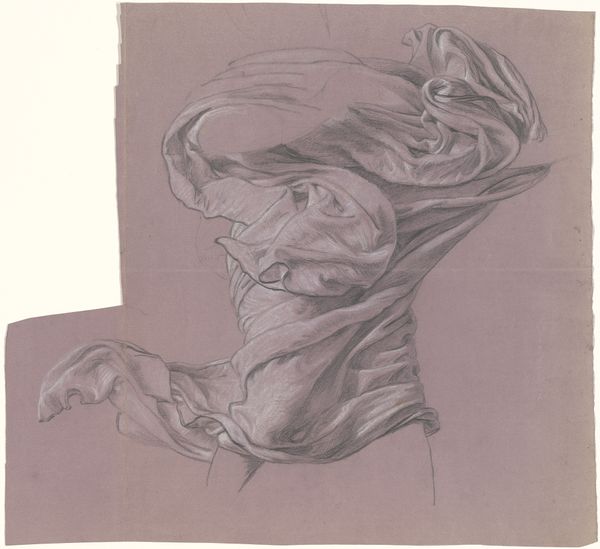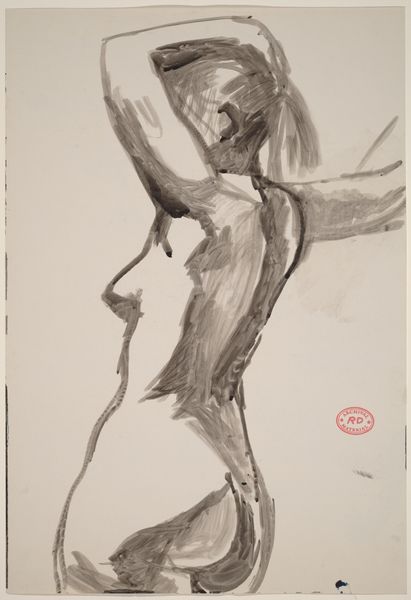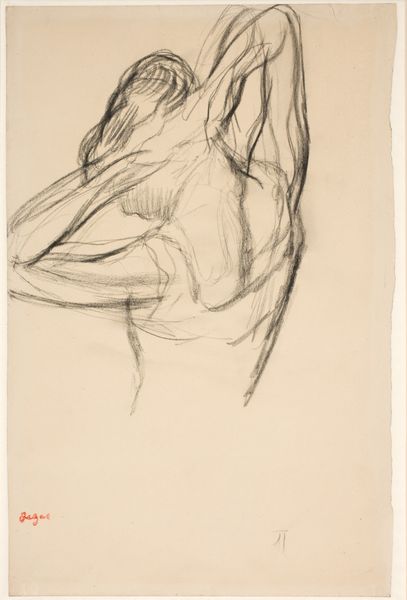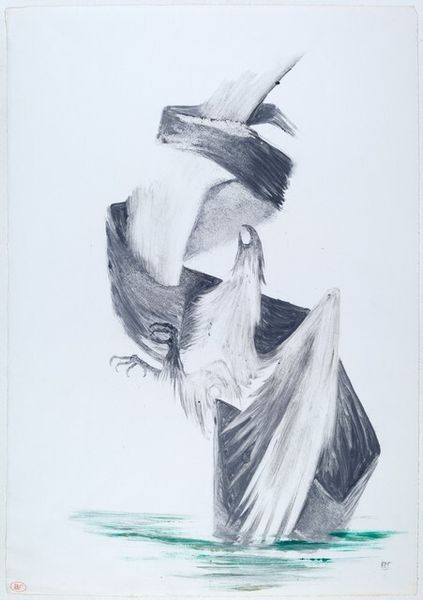![Detail of Drapery [Crayon study no. 5.14] by John Singer Sargent](/_next/image?url=https%3A%2F%2Fd2w8kbdekdi1gv.cloudfront.net%2FeyJidWNrZXQiOiAiYXJ0ZXJhLWltYWdlcy1idWNrZXQiLCAia2V5IjogImFydHdvcmtzL2Q1ODY3N2U1LWM0MWQtNDBlZC1iZDlhLWRjNTIzYTJhNTdkNi9kNTg2NzdlNS1jNDFkLTQwZWQtYmQ5YS1kYzUyM2EyYTU3ZDZfZnVsbC5qcGciLCAiZWRpdHMiOiB7InJlc2l6ZSI6IHsid2lkdGgiOiAxOTIwLCAiaGVpZ2h0IjogMTkyMCwgImZpdCI6ICJpbnNpZGUifX19&w=3840&q=75)
drawing, pencil, graphite, charcoal
#
drawing
#
charcoal drawing
#
figuration
#
pencil drawing
#
pencil
#
graphite
#
charcoal
#
academic-art
Copyright: Public Domain: Artvee
Editor: Here we have a drawing, "Detail of Drapery," a crayon study, probably by John Singer Sargent, and it's beautifully rendered with charcoal and pencil. It gives me a sense of classical sculpture, yet it also feels so immediate. What strikes you most about this piece? Curator: What fascinates me is the sheer labor embedded in this seemingly simple study. Sargent isn’t just capturing light and shadow; he's mastering the manipulation of material – charcoal, graphite – to depict another material, fabric. Notice the gradations achieved through different pressure and the blending techniques he employs. Editor: Right! The blending is remarkable. I was focused on the form, but seeing the craft of it, makes me wonder about his process. Curator: Exactly. The drawing is also Academic Art, and it looks like preparatory study of classical art. Consider the role of drawings like this in the 19th-century art world. The materiality speaks volumes. He is immitating the great works of the past but does it become something more than the sum of its parts? Editor: Hmm, it makes me think about mass production in that time, if it reflects the need to reproduce forms and techniques or to study to compete. What are the consumption practices related with works of art such as this study? Curator: A critical point, considering how prints facilitated knowledge and taste across social strata. These drawing traditions in relation with print-making were intended for a bourgeois that wanted to have acces to the master's skill in his home. Editor: So, this drawing demonstrates how artists used specific materials and techniques to elevate the depiction of ordinary objects, or maybe, train his hands for great works, while also reflecting the growing consumer culture around art. Curator: Precisely. By understanding the materiality and its relation to labor and consumption, we move beyond just appreciating the aesthetic. We see the work's participation in its specific economic moment. Editor: That really changes how I see it. Thanks!
Comments
No comments
Be the first to comment and join the conversation on the ultimate creative platform.
